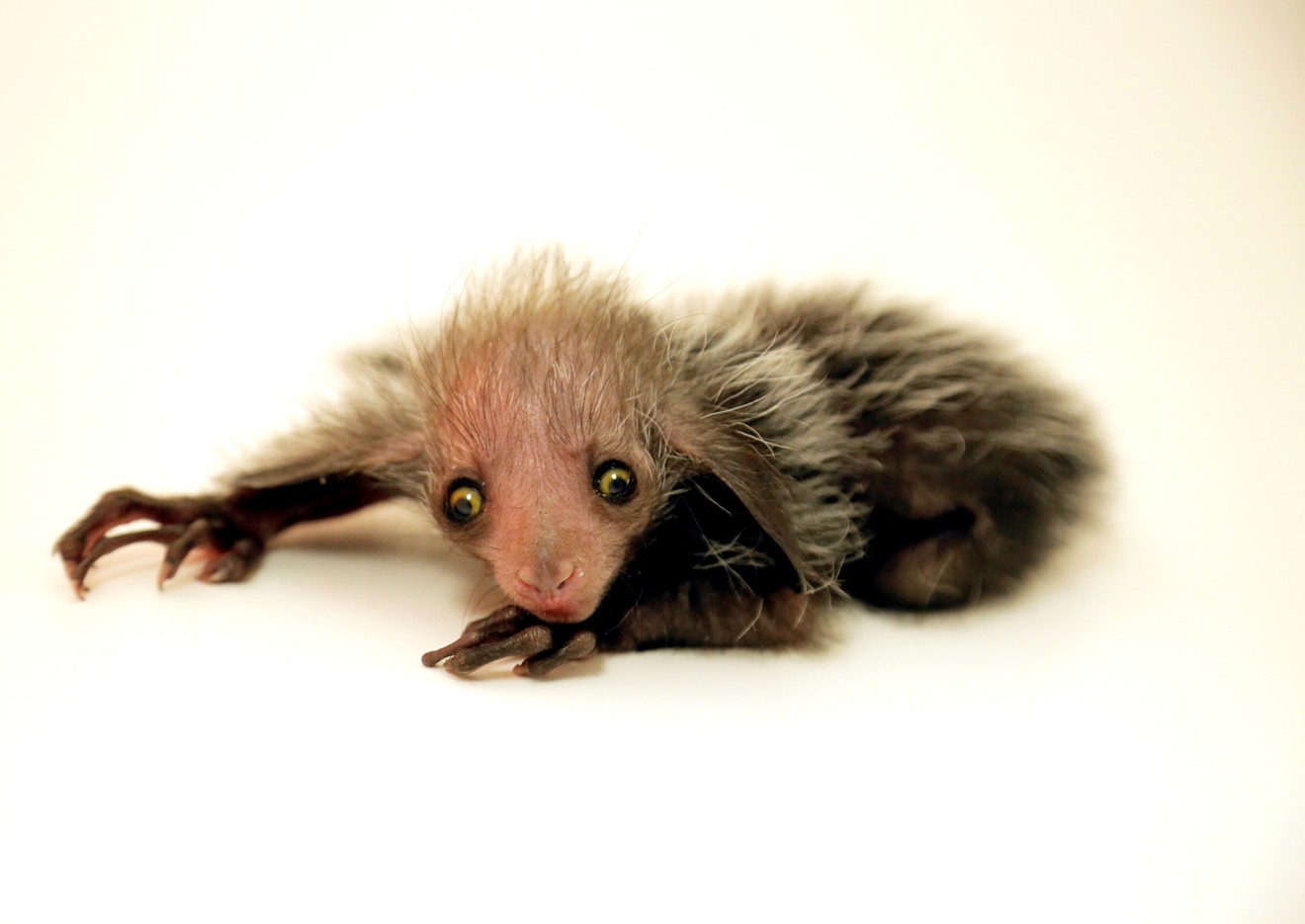"A what-what?" you might ask.
Turns out aye-ayes are reclusive nocturnal lemurs — the kind of creatures of the night that are just plain hard to spot. But even if they were decked out in glow sticks and blowing whistles (no, that would not be humane), they'd be a rare sight: There are only 24 aye-ayes in the United States. Lucky for Denver, three live here, and the newbie, who was born on August 8, and her father, Smeagol, and mother, Bellatrix, will all be on view in the upcoming Emerald Forest at the Zoo, now that Tonks has left the box in which she spent her first few months and has begun to explore her new environment.
Visitors can do a few things to improve their chances of seeing Tonks, according to primate keeper Becky Sturges:
1. Visit Early…and Late: The best times to spot the aye-ayes is soon after the Zoo opens around 10:30 a.m. and late in the afternoon, when Tonks tends to play and explore to burn off her last amount of energy before bedtime.People who catch a glimpse should consider themselves lucky. Aye-ayes are an endangered species from isolated parts of Madagascar.
2. Let Your Eyes Adjust: Spend at least five minutes letting your eyes adjust to the darkness in the exhibit and keep cell phone lights off.
3. Look Up: Tonks is very adventurous and likes to explore the entire habitat, but she tends to spend more time on branches in the higher areas.
"They are one of the most distinctive-looking animals on the planet due to a number of unique adaptations, including coarse dark hair, long bushy tails, rodent-like teeth, piercing eyes and skeletal hands that feature extra-long middle fingers with hooked claws," according to the Denver Zoo. "Aye-ayes are born weighing just a few ounces and reach up to five pounds as adults."
They may be small, but with middle-fingers like those, they are ready to flip any bratty onlookers a magnificent bird – if their joints worked that way.
If you don't spot Tonks right away, don't fret. You'll get another chance: Lemurs live around twenty years.















